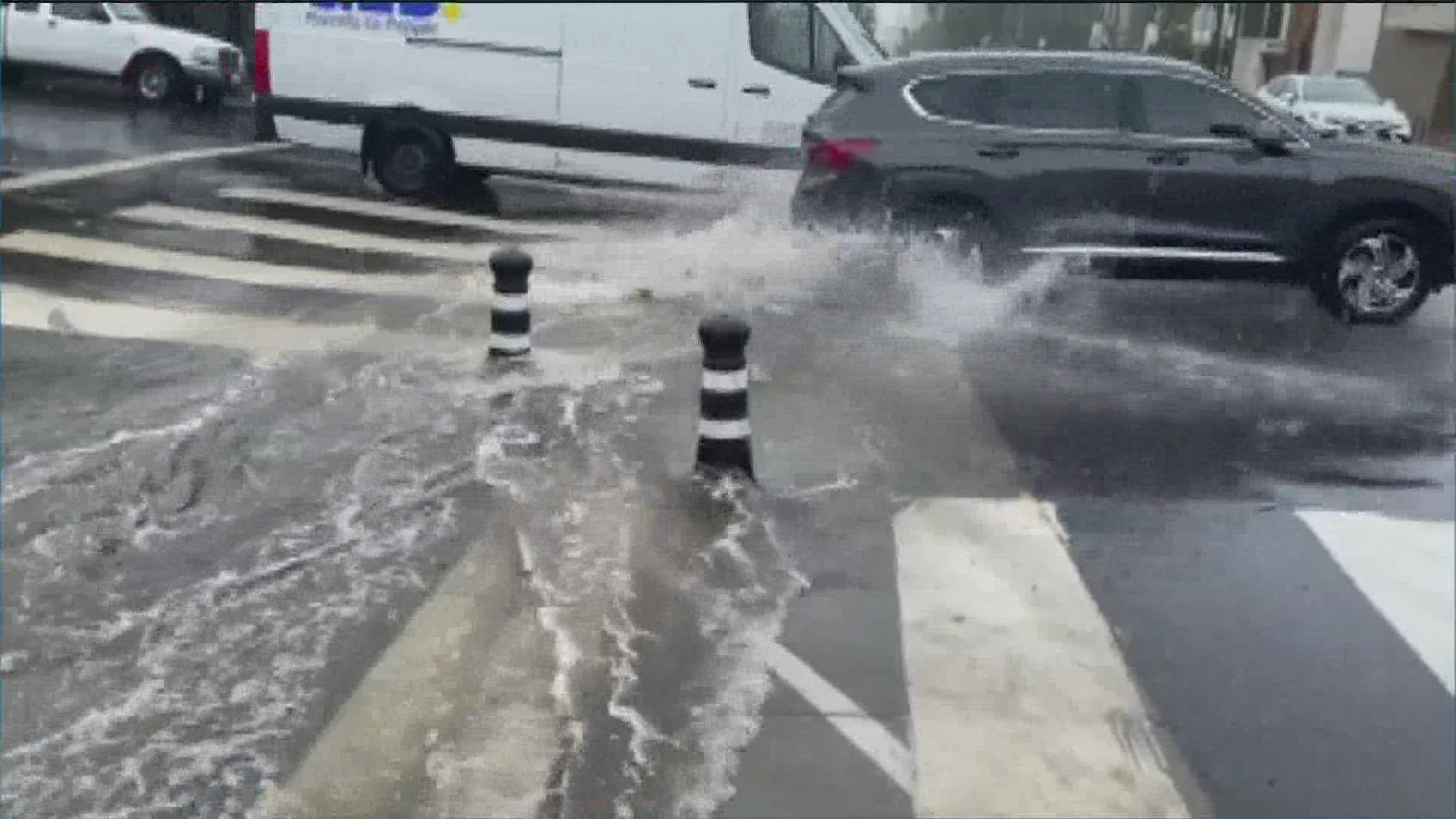MEXICO CITY, Mexico — Tropical Storm Kay appeared headed out to sea just short of the U.S. border Friday, after dumping heavy rains on a sparsely populated area of Mexico’s Baja California peninsula. While Kay is expected to continue weakening, it brought some rain to southernmost California.
The eye of Kay came ashore as a hurricane near Mexico's Bahia Asuncion in Baja California Sur state Thursday afternoon, but by Friday it was a tropical storm with maximum sustained winds of 50 mph (85 kph).
Kay was located about 165 miles (270 kilometers) south-southeast of San Diego, California and was moving northwest at 13 mph (20 kph). But the storm was expected to start a more marked turn to the west that would take it further out into the Pacific.
The U.S. National Hurricane Center in Miami said there was a chance the outer bands of the big storm could bring heavy rain — and possibly flash floods — to parts of parched Southern California and southwestern Arizona on Saturday. There were some light rains in San Diego Friday.
The Center said “flash, urban, and small stream flooding is likely across Southern California beginning today, especially in and near the peninsular ranges. Flash, urban, and small stream flooding is possible beginning later today in Southwest Arizona.”
Ivory Small, a meteorologist with the National Weather Service in San Diego, said the storm was expected to affect the San Diego County area with somewhat less strength than a tropical storm. While the eye would remain well offshore, he said winds could be strong enough to down tree branches.
Around an inch of rain was forecast for the coast and upwards of four inches in the mountains, “which is a lot of rain for September,” he said. The storm could also begin lowering temperatures around San Diego, which has been under an excessive heat warning.
The last time a hurricane or tropical storm came close to San Diego was Nora in 1997, which entered the U.S. as a tropical storm near Yuma, Ariz., and also brought about an inch of rain to the San Diego area, Small said.
The state government of Baja California Sur said more than 1,600 people had evacuated to shelters before Kay hit. It said some creeks had risen and closed some roads. Landslides reportedly cut some roadways on the peninsula, but there were no reports of injuries.
The mayor of the town of Mulege on the Gulf of California said Thursday morning that her town had been without water since Wednesday.
Meanwhile in the Atlantic, Hurricane Earl passed southeast of Bermuda late Thursday after weakening from a major Category 3 storm.
On Friday, Earl was centered about 255 miles (410 kilometers) east-northeast of Bermuda. It had maximum sustained winds of 100 mph (155 kph) and was moving northeast at 22 mph (35 kph).
Earl knocked out power to 1,500 customers as it brushed past Bermuda early Friday, downing several trees in the British Caribbean territory.
By late Friday morning, crews had cleared roads and were working to restore power to more than 100 homes that remained in the dark.
Government agencies and public transportation were operating as usual, while ferries were expected to restart service by Friday afternoon.
Watch Related: Tracking Tropical Storm Kay | High winds, rain for San Diego County (Sep 9, 2022)

